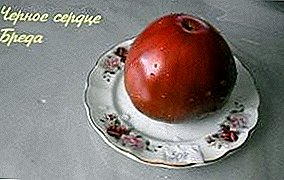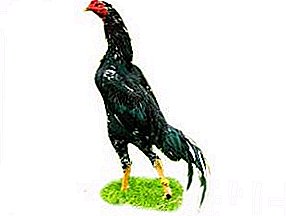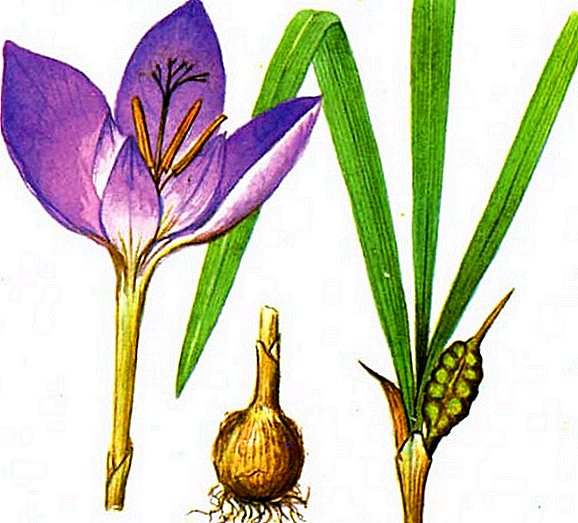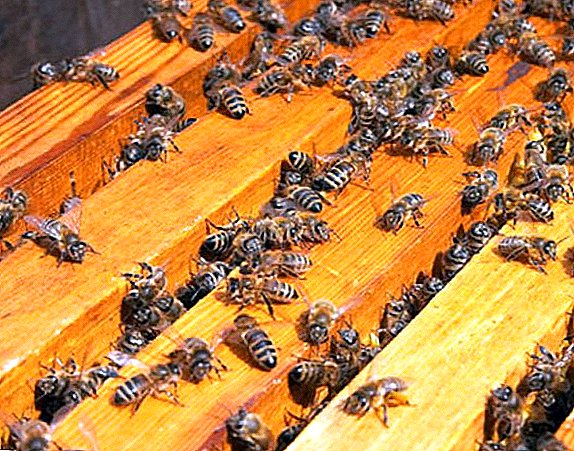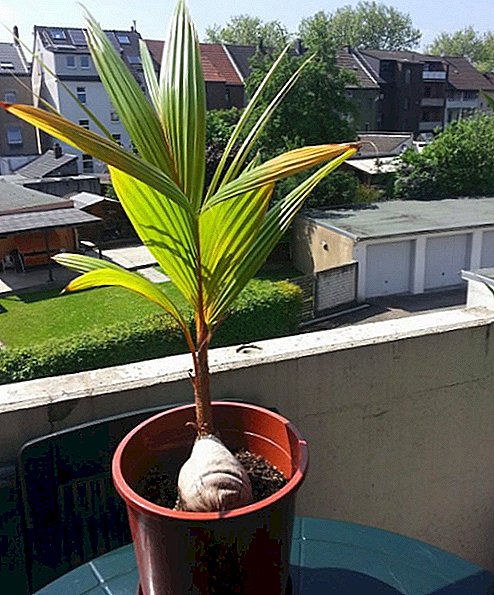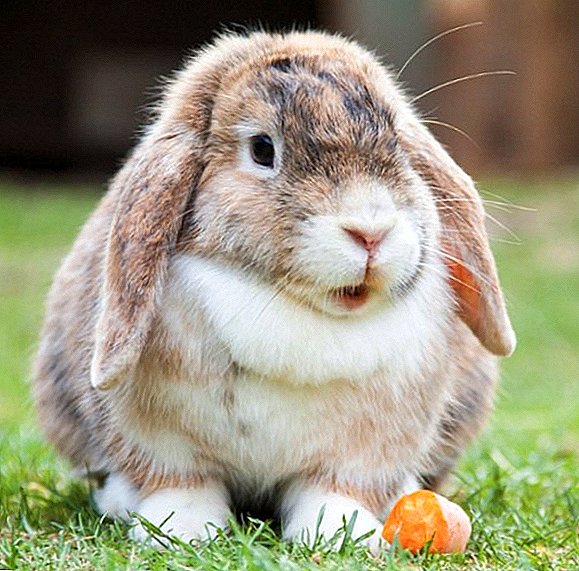 Rabbits are not only beautiful and gentle fluffy creatures, but also animals that require constant supervision. They are susceptible to various diseases and infections much more than other pets, so they need extra thorough care. Very often, rabbits are affected by respiratory diseases. If the pet began to sneeze, he has mucus from the nose, he feels bad, then the cause may be the disease. Below we consider a list of the most common ailments, as well as methods for their treatment and prevention.
Rabbits are not only beautiful and gentle fluffy creatures, but also animals that require constant supervision. They are susceptible to various diseases and infections much more than other pets, so they need extra thorough care. Very often, rabbits are affected by respiratory diseases. If the pet began to sneeze, he has mucus from the nose, he feels bad, then the cause may be the disease. Below we consider a list of the most common ailments, as well as methods for their treatment and prevention.
Why does rabbit sneeze
The main reason your pet may sneeze is an infectious or catarrhal disease. However, other sources can cause a similar reaction to the body, such as stress or inadequate detention conditions, poor nutrition or injury. We will deal with each of them in more detail.
Stress
Sometimes sneezing can be a reaction to the stress that an animal is experiencing. Usually, there is no rhinitis, on any discharge from the eyes. A rabbit can simply start sneezing for no particular reason, and then stop (when stress decreases or the irritant disappears).
We recommend reading about how to determine the sex of the rabbit, when you can allow the rabbit to be mated, how long it lasts, and how to determine the suckling nature of the rabbit.
Watch your pet - if you change your place of residence, change your feed, bring up another pet, and the rabbit started sneezing, most likely, the reason is just in stress. This symptom soon disappears. 
Bad conditions
Such a reaction may be caused by not very good conditions. For example, a dirty or dusty cage, high humidity, a strong foreign smell, dust in the room, a filler that has not changed for a long time, incorrectly chosen food, even too much sun, in whose rays the cage stands, can all provoke sneezing.
In this case, the pet can go nasal discharge. Be sure to check the condition of the cell. If there are visible flaws - eliminate them. If the cause is dust, you can gently wash the rabbit's nose with water from a syringe. It must be remembered that poor housing conditions can further cause many serious diseases in the animal.
Dry air
Dry air is one of the most common problems faced by rabbit owners. Sneezing may be due to the fact that the air is too dry or hot, and the pet's gentle nose begins to respond to this inflammation.  It is necessary to carry out airing more often, use humidifiers for air, provide enough water to your pet. You can simply put in a room a cup or a plate of water that will evaporate. Usually the problem is resolved rather quickly, and the rabbit stops sneezing.
It is necessary to carry out airing more often, use humidifiers for air, provide enough water to your pet. You can simply put in a room a cup or a plate of water that will evaporate. Usually the problem is resolved rather quickly, and the rabbit stops sneezing.
Did you know? Rabbits - extroverts. They are social animals and prefer to live in groups in the wild. This distinguishes them from hares, which are more inclined to loneliness.
Wrong diet
Incorrectly chosen food can cause not only poisoning or poor health, but also rhinitis. If the food does not fit your pet, causes irritation, poor quality or improperly chosen, this can cause illness. Replace feed, consult a veterinarian. 
Allergy
Allergies can cause not only rhinitis, but also associated problems, such as discharge from the eyes, inflammation of the respiratory tract, poor health, cough. Rabbits may experience allergic reactions to feed, selected hay for bedding, medicines, etc.
We advise you to read about whether it is possible to keep chickens and rabbits together.
Be sure to consult your doctor, as only he can accurately determine the cause of an allergic reaction and prescribe the correct treatment.
Nose injury
Such a symptom may indicate trauma to the nose or respiratory tract. If the pet has difficulty breathing, it sneezes, coughs, snorts - it must be shown to the veterinarian, especially if there is a discharge with blood.  This may indicate that there was some foreign object that does not allow to breathe, or some serious injury was caused. Consultation with a doctor in this case is required.
This may indicate that there was some foreign object that does not allow to breathe, or some serious injury was caused. Consultation with a doctor in this case is required.
Infectious diseases
Sneezing and rhinitis are the most common reactions to a disease caused by an infection. Similar symptoms develop over three days. If there is a tendency to worsening, compulsory treatment with drugs is required.
Important! If the infection is not treated, This can lead to very sad consequences. Infectious diseases in acute or chronic form can be fatal, the pet will die in just 1-2 months. If you are seeing serious changes in the pet's condition, immediately contact a specialist.
A rabbit can get infected from another sick animal, and even from a person himself, for example, when he is sick with a cold or has inflammation of the tonsils. In this case, you will need a visit to the doctor. Symptoms and treatment of infectious diseases are described below. 
Cold symptoms
Colds can be infectious or non-infectious. In this case, there are common symptoms by which you can identify the problem and take measures for treatment. More information about the different forms of colds, pathogens and symptoms - below.
It will be useful for you to read about what methods of treatment of sores in rabbit ears.
Non-infectious
Often, a rabbit can develop colds that are not infectious. Usually they are connected with the fact that the pet has frozen and has caught a cold, has been affected by a draft, was outside the house in bad and wet weather.
Often, this problem occurs when a sharp temperature drops from high to low and vice versa. In general, the common cold is caused by outside influence.  Her symptoms will be:
Her symptoms will be:
- frequent pet sneezing;
- rhinitis and nasal discharge, most often clear or whitish discharge;
- a crust forms around the nose;
- sometimes there is an increase in temperature;
- There may be problems with feeding, appetite, decreased activity.
We advise you to get acquainted with such diseases of rabbits and methods of their treatment as coccidiosis, pasteurellosis and myxomatosis.
Such a cold can have a light form, with which the pet copes itself in a few days. But if the condition worsens, the rabbit behaves unnaturally and feels worse - he will need treatment. It is better to consult a doctor.
And be sure to monitor the conditions of the animal - the temperature of the room, feeding, the amount of sun, in time to change the litter and ventilate the room. It is not recommended to take a long walk with your pet in the open air in rainy or cold weather. This will help avoid colds. 
Infectious
The cause of any infectious diseases are, most often, bacteria or viruses. Pathogens usually become streptococci, staphylococci, bordetella, pasteurella, and others. Usually they are carried not only by diseased individuals, but also on animal hair, on food or hay for bedding, clothing, etc.
Learn how to make a feeder (in particular, bunker) and a drinking bowl for rabbits.
The symptoms of infection are:
- green or white nasal discharge;
- tearing or inflammation of the eyes;
- swelling of the nose (redness and increase in size) or eyes;
- coughing, wheezing, or shortness of breath;
- temperature increase, usually sharp and severe;
- lethargy and lack of appetite;
- the pet may also have a depressed mood.
Video: the main diseases of rabbits and methods of dealing with them If a runny nose develops, then it can lead to the appearance of purulent discharge. Over time, pieces of dried pus appear on the cheeks. If the rabbit begins to constantly and strongly scratch the nose, sneezes, loses weight and refuses to eat, this indicates a running infectious rhinitis.
You probably will be interested to read about the features of the content of such breeds of rabbits, Californian, gray giant, white giant, marder, rex, butterfly, ram, rizen, vienna blue and black and brown.
How to treat
Treatment of infectious colds requires proper selection of medicines. For example, viral infections are not recommended to be treated with antibiotics, since they can cause more harm than good.
If this is a simple cold, then it is enough to place the animal in a warm room, improve nutrition, add nutrients to food. In the case when the pet does not get better, should be treated with medication. You will find out below which drugs are needed and which treatment regimen to follow. 
Medicines
Furacilin, penicillin and antibiotics are often used in combination with probiotics to treat the animal. The treatment is necessarily carried out by courses and requires careful adherence to the instructions.
A mixture of Penicillin and Novocain
If after three days the rabbit doesn’t stop sneezing, its mucous membrane is swollen, the runny nose becomes constant, fever and other symptoms are observed, then you can use a mixture of drugs like Penicillin and Novocain. Penicillin in the ratio of 20 thousand units. diluted in 1 ml of Novocain 0.25%.
The resulting medicine is gently injected into each nostril with a pipette. The course of treatment is at least two weeks. Just a day you need to drop 10 drops, 2-3 times (one or two drops in each nostril, respectively). Such a mixture not only helps to destroy the infection, but also to relieve swelling, pain and irritation. 
Furacilin
Furacilin has long been used to treat not only humans, but also animals. The tablet is carefully crushed and diluted in water in a ratio of 1: 100 (1 g per 100 ml). Water must be taken hot and just boiled, mix thoroughly.
After the solution has cooled, it is instilled into the nostrils with a dropper. Use the same system as in the previous case: 10 drops per day for two weeks. The drug helps to disinfect the mucous membranes, removes the infection, relieves irritation. The solution acts in 70% of cases.
Antibiotics
In some cases, antibiotics become necessary. Chloramphenicol is most often used, Marbotsil 2% and Baytril 2.5% are very strong and effective antibiotics. Marbotsil is administered by injection twice a day, 0.1 mg of the drug per 1 kg of animal weight (should be administered according to the instructions and only after consulting a doctor who can adjust or change the dosage).  Baytril is introduced according to the same scheme, but in the calculation of 0.3 mg per 1 kg of animal weight. You can give in the form of a shot or add to food. Chloramphenicol give 30-50 g twice or three times a day, adding to food.
Baytril is introduced according to the same scheme, but in the calculation of 0.3 mg per 1 kg of animal weight. You can give in the form of a shot or add to food. Chloramphenicol give 30-50 g twice or three times a day, adding to food.
Important! Before you begin treating your pet, wellYou should contact your veterinarian for advice. He will be able to properly prescribe the necessary drugs and their dosage. If necessary, he will also prescribe tests, since rhinitis may also indicate other diseases.
For the treatment of infection, you can also give 1 mg of Biomitsin per day, diluting it previously in warm water and adding it to food. In the case of serious illness, the dose is increased to 3 mg and given three times a day. The drug acts quickly. Usually positive results are observed already on day 5.
After using antibiotics, it is recommended to conduct a course of treatment with probiotics. They help the body to restore its functions, to cope with the harm to the intestine, which causes the antibiotic, and even to prevent the return of the disease again.  To do this, use vitamin B (given once or twice a day, 1 mg), Sulfadimethoxin (100 mg per day, added to food), Norsulfazol (200-250 g per day). The course of prophylactic treatment lasts 5-10 days. Do not use large doses, it is better to give the minimum dose.
To do this, use vitamin B (given once or twice a day, 1 mg), Sulfadimethoxin (100 mg per day, added to food), Norsulfazol (200-250 g per day). The course of prophylactic treatment lasts 5-10 days. Do not use large doses, it is better to give the minimum dose.
Get acquainted with the best meat, decorative, fur and down rabbit breeds.
Inhalation
A good method for treating rabbits is inhalation using natural herbs or essential oils. They use fennel, thyme, sage, eucalyptus and mint. It is necessary to observe the proportion: 1 drop of oil per 2 liters of water.
This method of treatment helps to clean the nose and well affects the condition of the respiratory tract. Inhalation can be done once or twice a day, but not longer than a week, so as not to overdry the mucous.
A vessel with a hot solution is placed at a distance from the animal, so that it does not reach it, after which the cage and dishes are covered with a towel, leaving an open edge for admission of air.  The duration of the procedure is 10-15 minutes. At this time, the pet breathes freely in pairs of plants or ether, which help it to get rid of cough and runny nose.
The duration of the procedure is 10-15 minutes. At this time, the pet breathes freely in pairs of plants or ether, which help it to get rid of cough and runny nose.
What to feed during the illness
There are no special indications that the patient should have a diet. Limiting food should not be, on the contrary, it is better to add more nutrients, vitamins, greens. Add to the diet and fruit with vegetables.
It will be useful for you to read about what they eat and how to feed the rabbits in winter, how not to feed the rabbits, what grass to feed the rabbits, and whether the rabbits also eat wormwood, nettles and burdocks.
It is also necessary to ensure that the food is warm. During the illness, the rabbit needs increased heat, so it needs to be moved to the warmest place in the house and feeding there. Rabbits can also be given herbal teas as a drink.
Mint, basil, dill or chamomile are used. They not only warm (they are given warm) and quench thirst, but also support immunity, allow to receive an additional portion of useful substances.  You must make sure that the rabbit feeds during the illness, as he may refuse to eat. In case of a long refusal, it should be force fed.
You must make sure that the rabbit feeds during the illness, as he may refuse to eat. In case of a long refusal, it should be force fed.
Did you know? If you give the rabbits free to reproduce offspring, then in 90 years their number will be equal to the number of square meters on the entire planet!
Preventive measures
In order for your pet not to be ill, you should follow these preventive measures:
- constantly inspect the animal, at least once a week;
- be sure to maintain the necessary comfortable humidity in the room, make sure that there are not too bright and long sunshine, drafts;
- avoid sudden changes in temperature;
- maintain hygiene in the cage and in the house, constantly remove dust and keep the litter clean;
- include nutrients and vitamins in the diet;
- disinfect the cage at least once a week;
- vaccinate the animal.
 If you comply with all the conditions for the care of a rabbit, adhere to proper nutrition and monitor its health, the risk of any disease is reduced.
If you comply with all the conditions for the care of a rabbit, adhere to proper nutrition and monitor its health, the risk of any disease is reduced.Did you know? The female rabbit has a split uterus, so she can endure two litters at once, which are conceived at different times and even from different males. And the rabbit may come false pregnancy.


